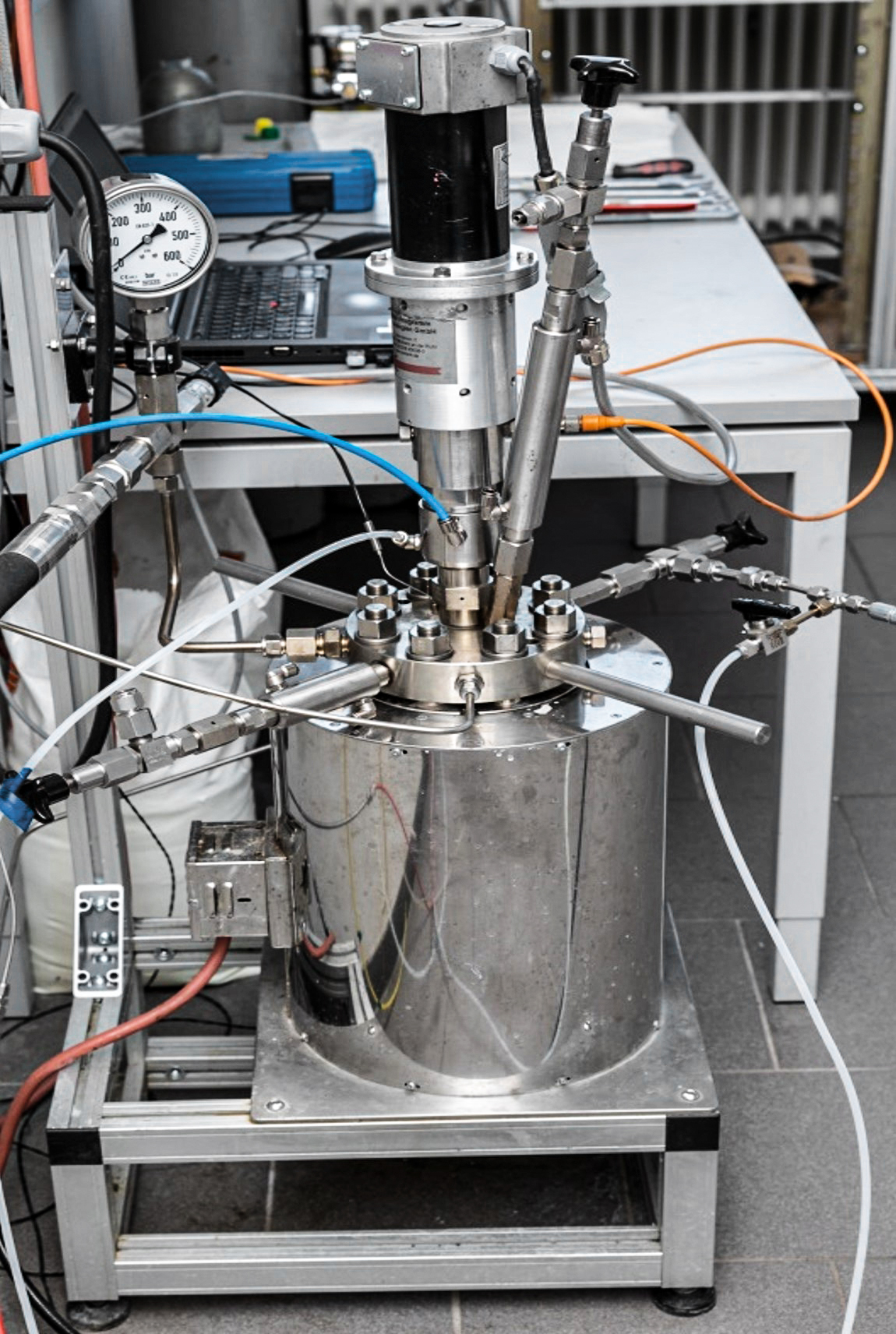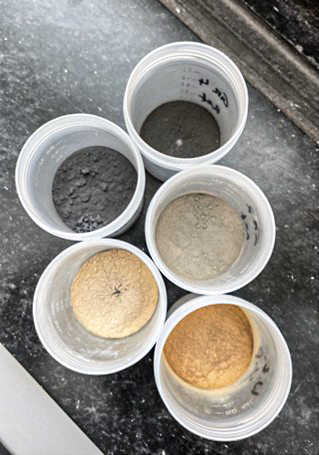Introduction
The project deals with side products (ashes, slags) from the cement and refractory production as well as from the steel mill which are grinded to an appropriate particle size and directly carbonated with CO2 from these energy intensive industries. The produced carbonates are deposited. Since these side products have to be deposited anyway, this method acts as an alternative to common CCS scenarios.
The carbonatisation process will be performed with purified CO2 from the energy intensive industry like the refractory production or steel industry but also with untreated off-gases.
During a former K1-MET project (P 1.2 Utilization of metallurgical slags, 2019-2023), a pressurized attrition mill/ reactor was used by the Montanuniversitaet Leoben (Chair of Mineral Processing) for wet treatment of LD slag with CO2 up to 60 bars. The experience obtained will be used for the profound development of the container-based pilot plant mill, operating according to the needs of the waste materials provided from the process partners.
Furthermore, the process to be developed aims to decrease the total energy demand as well as the system complexity in order to achieve an economically and ecologically sound CCS process.
Objectives and Motivation
- Determination of the optimum process conditions
- Investigation of the required particle sizes
- Evaluation of the influence of different secondary feedstock on the carbonatisation process
- Design and operation of a pilot plant for the direct carbonatisation of suitable ashes and slags in the environment of a cement production plant
- Combination of the grinding process with the carbonatisation reaction in one apparatus in order to enhance the conversion rate and yield to carbonates.
Methodology
- Comprehensive literature review on direct carbonatisation processes, used feedstock, utilized apparatus and operating conditions to determine suitable conditions for laboratory experiments
- Laboratory experiments to systematically investigate the influence of the different secondary feedstock, the particle size, and the operating conditions (temperature, pressure, CO2 partial pressure, residence time) on rate and yield
- Characterization of raw materials as well as products from the carbonatisation process using Scanning Electron Microscopy – Energy Dispersive X-Ray Spectroscopy (SEM-EDX) as well as Thermogravimetric Analysis – Difference Scanning Calorimetry (TGA-DSC)
- Design and operation of a combined grinding and reactive apparatus in pilot scale under the most promising conditions determined in laboratory scale
Results and Application
The project involves designing an apparatus for a combined grinding and reactive carbonatisation process. Optimal operating conditions for the direct carbonatisation process are determined, taking into account conversion rates and yields. Furthermore, various secondary raw materials are evaluated for their suitability in the carbonatisation process. Initial estimates of operating costs (OPEX) and investment costs (CAPEX) for an industrial carbonatisation process are conducted. Mass and energy balances are created, and the potential for CO2 reduction is estimated.

 DE
DE EN
EN
